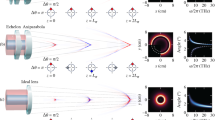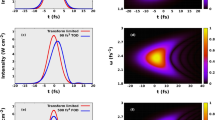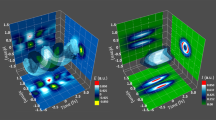Abstract
IN the interesting review1 of the pulsation theory in his George Darwin Lecture of 1943 before the Royal Astronomical Society, Prof. S. Rosseland has indicated the importance of unharmonic oscillations in explaining the Cepheid characteristics, and brought out the effect of the amplitude in lengthening the pulsational period, pointed out by Kluyver2 in 1937, and imparting the characteristic skewness to the light and velocity curve.
This is a preview of subscription content, access via your institution
Access options
Subscribe to this journal
Receive 51 print issues and online access
$199.00 per year
only $3.90 per issue
Buy this article
- Purchase on SpringerLink
- Instant access to full article PDF
Prices may be subject to local taxes which are calculated during checkout
Similar content being viewed by others
References
Rosseland, S., Mon. Not. Roy. Ast. Soc., 103, 233 (1943).
Kluyver, H. A., B.A.N., 7, 265 (1937).
Miller, J. C. P., Mon. Not. Roy. Ast. Soc., 90, 59 (1929).
Kopal, Z., Mon. Not. Roy. Ast. Soc., 99, 33 (1939).
Author information
Authors and Affiliations
Rights and permissions
About this article
Cite this article
ROY, S. Amplitude Effect in Cepheid Variables. Nature 155, 24 (1945). https://doi.org/10.1038/155024b0
Issue date:
DOI: https://doi.org/10.1038/155024b0



